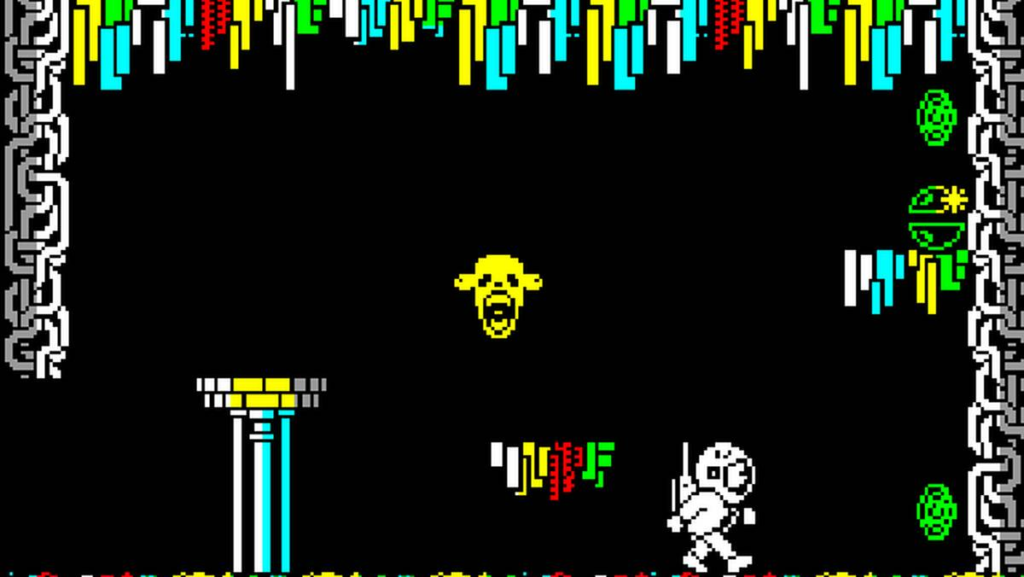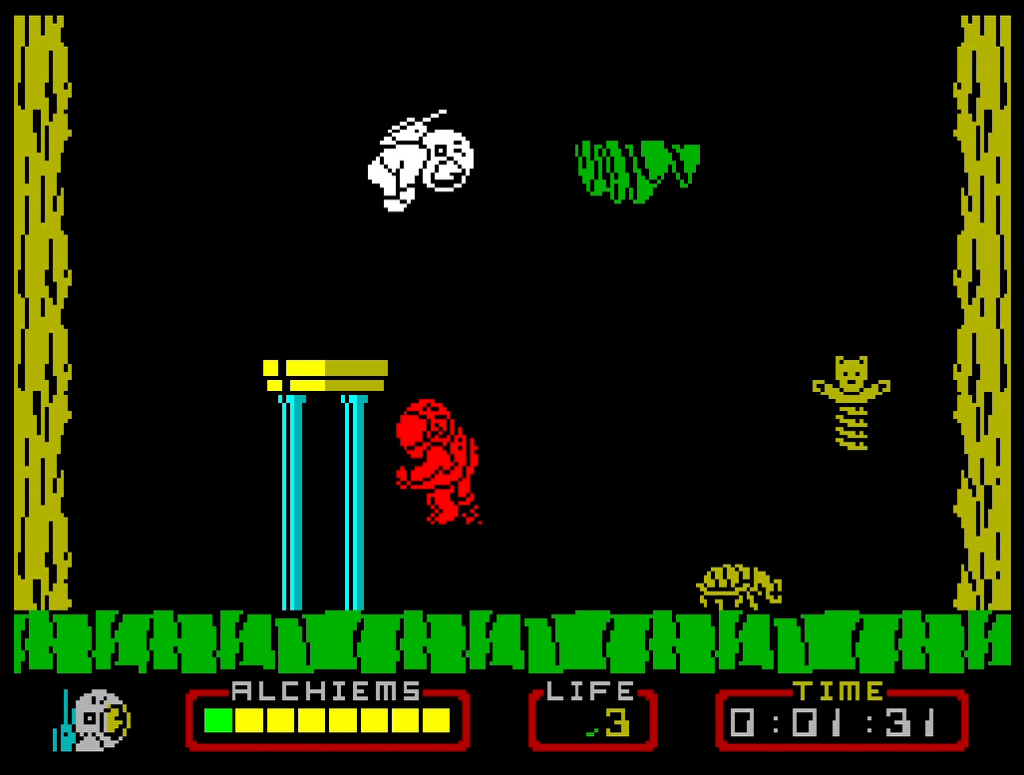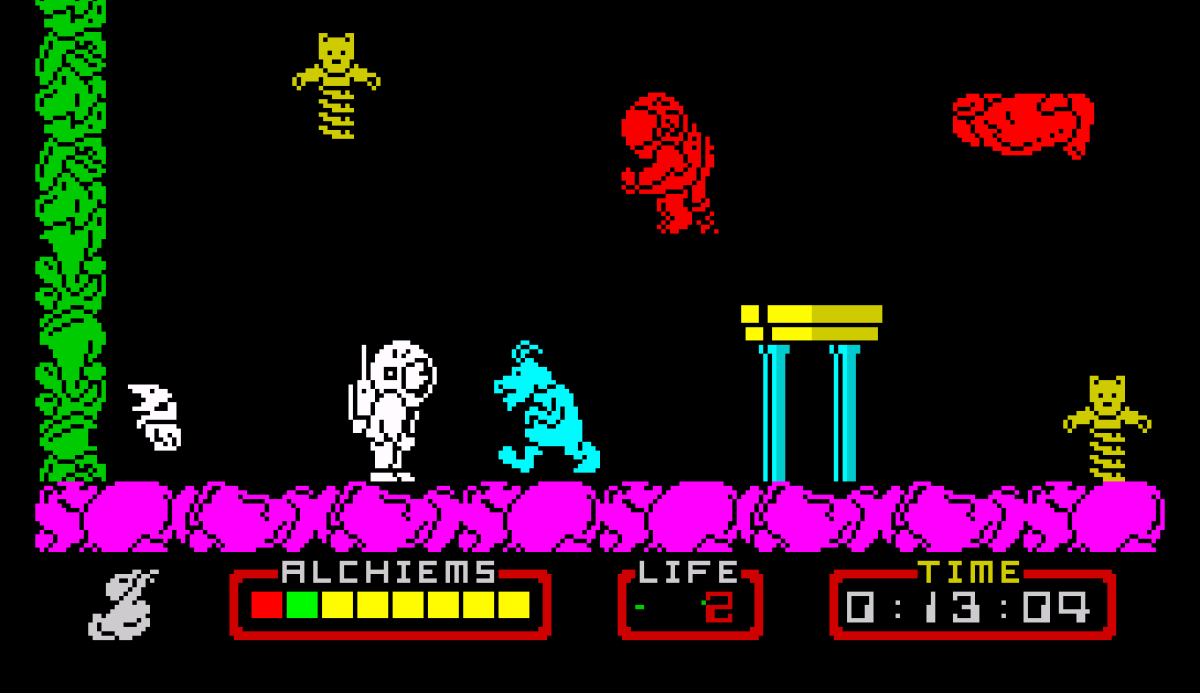In the realm of classic video games, there exists a constellation of titles that have left an indelible mark on the industry. “Nodes of Yesod” is one such celestial body, a game that combined elements of exploration, puzzle-solving, and science fiction in a way that captivated gamers of its era. Released in the early 1980s, this title by Odin Computer Graphics may not be as well-known as some of its contemporaries, but its influence and charm are undeniable. In this deep dive, we’ll journey through the universe of Nodes of Yesod, exploring its genre, platforms, gameplay, key features, strategies (without cheats!), reviews, cultural impact, and even its sequels and similar games.
Unraveling the Mystery
Genre and Platforms
Genre: Action-Adventure
“Nodes of Yesod” belongs to the genre of action-adventure games. This genre is characterized by a blend of action elements, typically involving combat or platforming, with adventure elements like exploration, puzzle-solving, and a narrative-driven focus.

Platforms:
- ZX Spectrum: Nodes of Yesod was initially released for the ZX Spectrum in 1985. This 8-bit home computer was immensely popular in the United Kingdom and played a crucial role in the early history of British gaming.
- Commodore 64: Shortly after its ZX Spectrum release, Nodes of Yesod made its way to the Commodore 64, another iconic home computer of the 8-bit era.
- Amstrad CPC: This game also found its way to the Amstrad CPC platform, catering to a broader audience of retro gamers.
- BBC Micro: Gamers with a BBC Micro computer could also enjoy the adventure on this platform.
With its multi-platform presence, Nodes of Yesod reached a significant portion of the gaming community during its heyday. Its diverse availability contributed to its recognition and nostalgic appeal.
Gameplay: An Interstellar Quest
Nodes of Yesod transports players into the role of a lunar explorer named Charlemagne ‘Charlie’ DiSabled, who embarks on a perilous quest to collect eight “nodes” scattered across the moon. These nodes, essential for the continued existence of Earth, have been stolen by malevolent aliens, known as the “Thorian,” who reside in the underground caverns of the moon.
Key Gameplay Features
Exploration
The game’s primary gameplay element revolves around exploration. Players must navigate a sprawling lunar landscape, filled with hazards and secrets, to locate the elusive nodes. The moon’s caverns are a labyrinthine network of tunnels, making navigation both challenging and rewarding. Nodes of Yesod successfully captures the sense of adventure as players uncover hidden passages and mysterious chambers.
Puzzle-Solving
Puzzle-solving is another core aspect of the game. As Charlie progresses deeper into the moon’s caverns, he encounters puzzles that require both logic and creativity to solve. These puzzles add depth to the gameplay, elevating Nodes of Yesod beyond a mere platformer.
Stealth and Combat
Thorian guardians, hostile alien creatures, lurk within the caverns. Charlie must use stealth to avoid these enemies or engage in combat when necessary. The game’s combat mechanics are rudimentary but add a layer of tension to encounters with the Thorian.
Platforming Challenges
Nodes of Yesod incorporates platforming challenges that test players’ dexterity and timing. Jumping across treacherous gaps and avoiding hazards such as falling stalactites are essential skills for navigating the moon’s terrain.
Inventory Management
Charlie has limited inventory space, adding an element of resource management to the game. Players must decide which items to carry and which to leave behind, as some objects are crucial for progressing through the game.

Strategies (No Cheats Allowed!)
Mastering Nodes of Yesod requires a combination of skill, strategy, and patience. Here are some tips to help lunar explorers succeed:
- Map Exploration: Create a mental map of the moon’s caverns as you progress to avoid getting lost. The layout can be complex, and knowing where you’ve been is essential.
- Item Management: Carefully manage your inventory. Collect items strategically, and don’t hesitate to backtrack to retrieve vital objects.
- Stealth Over Combat: Whenever possible, opt for stealth over combat. Avoid unnecessary confrontations with Thorian guardians to conserve health and resources.
- Puzzle Persistence: Approach puzzles systematically. If you’re stuck, step away for a while and return with a fresh perspective. Sometimes, the solution becomes clear when you’re not actively thinking about it.
- Precision Platforming: Practice precise jumps and timing when navigating platforming sections. Precision is key to avoiding hazards and progressing through the game.
- Save Scumming (If You Must): Though not the most honorable strategy, some players resorted to “save scumming” by frequently saving and reloading the game to minimize risks. Use this sparingly if you find certain sections overly frustrating.
Reviews and Cultural Impact
Upon its release, Nodes of Yesod received generally positive reviews, particularly for its engaging gameplay and atmospheric presentation. Critics praised its blend of action and adventure elements, which was relatively novel at the time. The game’s graphics and audio, while limited by the hardware of the era, were considered impressive and immersive.
Nodes of Yesod’s cultural impact, while not on the same scale as some blockbuster titles, was significant within the retro gaming community. It remains a notable entry in the catalog of games that defined the early days of home computing. Its legacy is upheld by dedicated fans and preservationists who continue to celebrate its unique charm.
Sequels and Kindred Spirits
The story of Charlemagne DiSabled’s lunar exploits continued with a sequel, “The Arc of Yesod,” released in 1985. In this follow-up, Charlie returns to the moon to investigate a mysterious asteroid crash and faces new challenges and enemies. “The Arc of Yesod” retained the core gameplay elements of its predecessor while introducing fresh content.
Additionally, the spirit of Nodes of Yesod can be felt in several classic and modern games that blend action and adventure elements:
- Metroid Series: The Metroid series, known for its exploration and platforming, shares thematic similarities with Nodes of Yesod. Players guide Samus Aran through alien worlds, uncovering secrets and battling hostile creatures.
- Castlevania Series: The Castlevania franchise combines action, platforming, and exploration as players navigate Dracula’s castle. The series evolved into “Metroidvania” games, emphasizing non-linear exploration.
- Spelunky: This modern indie gem captures the essence of classic platforming and exploration. Players delve into procedurally generated caves, solving puzzles and surviving traps.
- Hollow Knight: A contemporary masterpiece, Hollow Knight blends precise platforming with deep exploration in a mysterious underground world.
- Axiom Verge: Inspired by classic titles like Metroid, Axiom Verge offers a rich, interconnected world to explore, filled with secrets and challenging foes.
In conclusion, Nodes of Yesod, with its unique blend of action and adventure, holds a special place in the history of retro gaming. It paved the way for future titles that would explore similar gameplay mechanics and themes. While it may not be a household name, it remains a cherished gem for those who appreciate the golden era of home computing and the timeless

